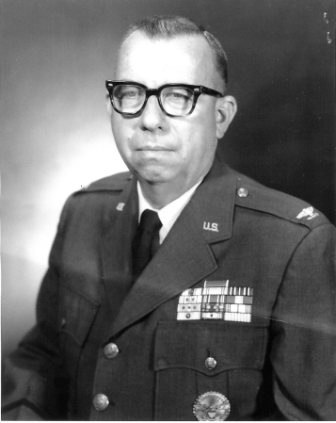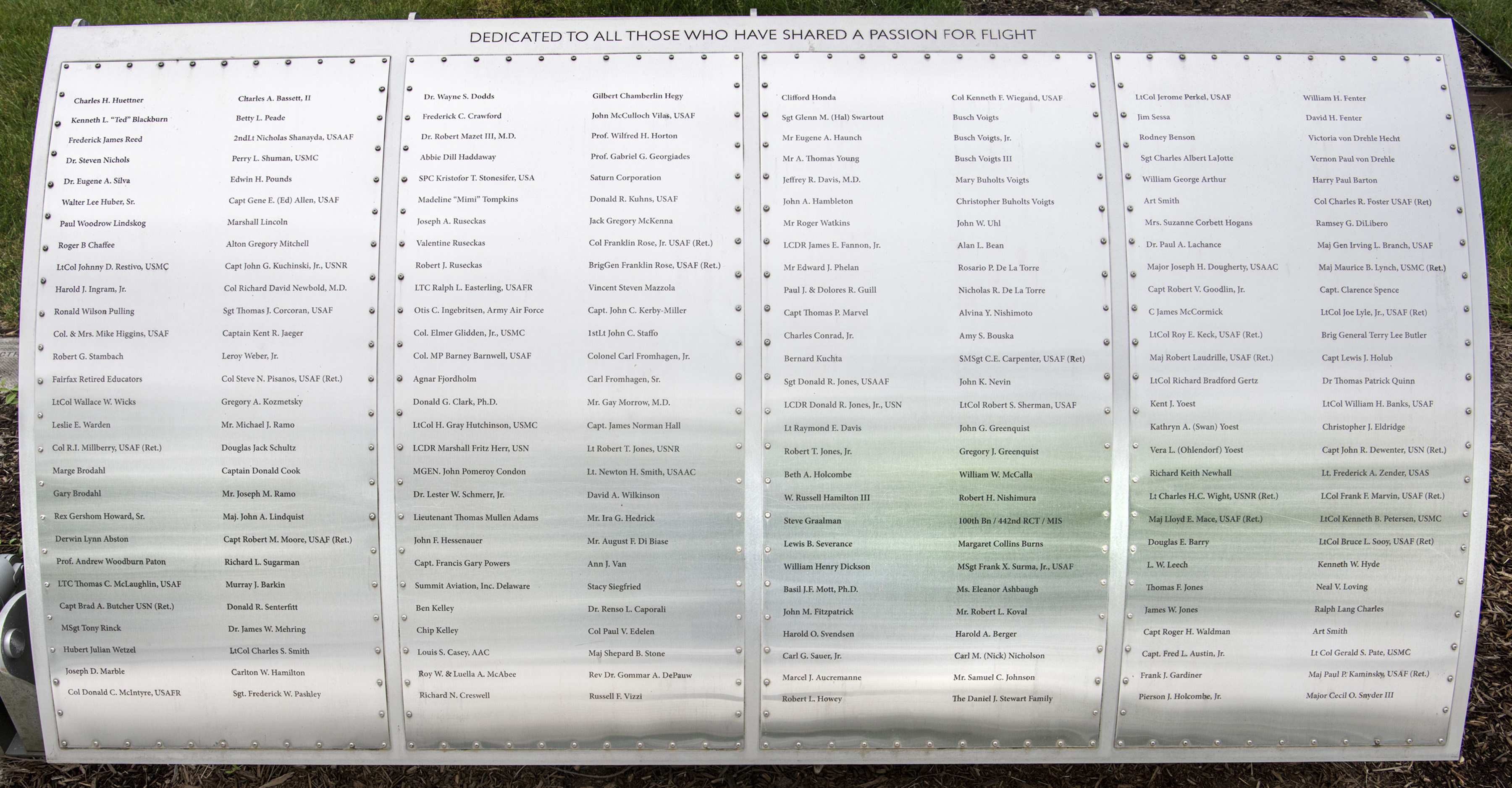
Foil: 24 Panel: 1 Column: 1 Line: 17
Wall of Honor Level: Air and Space Sponsor
Honored by:
Mr. Patrick B. Millberry
Robert (Bob) Ingalls Millberry, United States Air Force served his country from horse-drawn artillery in Army ROTC to his final responsibilities for upgrading Air Force airfields worldwide to accommodate the latest generation of jet transport aircraft. Born in 1912 in the rural community of Lakeport in the northern coastal mountains of California, Bob earned his A.B. in Engineering in 1934 and an advanced degree of Engineer in Petroleum Mining in 1936 from Stanford University. After four years of Army ROTC, he was also commissioned as a Reserve 2nd Lieutenant in the Army in 1936.
After Stanford, Bob began his intended career as a Petroleum Engineer, working in southern California for Shell Oil and Richfield Oil but keeping his Reserve commission active. In 1941, 2nd Lieutenant Robert Millberry was called to active duty at March Field (Riverside, CA) for one year as an ordnance officer for the Army Air Forces. That active duty would last twenty-six years and include three wars.
After Ordnance School at Aberdeen Proving Ground, MD, and short assignments at Tucson Air Base (AZ) and with the 30th Bombardment Group, 1st Lieutenant Millberry was assigned to the 4th AF HQ in San Francisco where he worked on the development of skip bombing whereby pilots flying at low altitude in the South Pacific could “skip” their bombs across the water toward a ship and then maneuver away before the bomb struck its target.
In 1943, Major Millberry was transferred to the Eleventh AF in Alaska as the Ordnance Officer for the 11th Bomber Command. Based in Adak and Amchitka, the B-24, B-17, B-26 and B-25 bombers required constant arming under extreme weather conditions. After the Japanese were pushed off of Attu in May with heavy casualties, that island became the base for long-range bombing of the Kurile Islands of Japan, the first attack on Japanese soil since the Doolittle raid of 1942.
After the war ended, temporary reserve Lieutenant Colonel Millberry accepted a Regular commission as a 1st Lieutenant, U.S. Army Air Forces. He attended Post Engineer School at Lowry Field (Denver) CO then went on to Boca Raton Army Airfield as the Post Engineer. During this tour in 1947, he was transferred to the newest service branch, the United States Air Force with a new four digit service number. His next posting was to Keesler AFB (Biloxi, MS) where he directed the construction of the new AF schools and over 800 units of base housing. In 1951, ten years after being called to active duty for WWII from the oil fields of Southern CA, he was promoted to full Colonel, working the new field of Air Installations (today called Civil Engineering) and served as the Keesler Air Base Commander.
In 1951 Colonel Millberry was assigned as the Deputy Chief of Staff for Installations for the new Flying Training Air Force with HQ based in Waco, TX. FlyTAF provided flying training for the combat crews deploying to Korea: pilots, navigators, bombardiers, and gunners. In 1952, he became the Director of Installations for the Fifth Air Force in Taegu, Korea, responsible for building and maintaining the airstrips for the intense air operations of the Korean War despite extreme weather, primitive infrastructure and rugged agricultural terrain. In 1953, Colonel Millberry redeployed to Nagoya, Japan to which the Fifth Air Force returned after Korea. He served as the Deputy Chief of Staff for Installations until 1955. One of his temporary assignments was to advise the French Forces in Indo-China (Vietnam) on the maintenance and repairs of airfield using PSP (pierced steel plank), a technique he had overseen extensively in Korea. After the French withdrew from Vietnam, he developed airfields for US Air Forces in Taiwan in 1955 and conducted surveys of airfields in Okinawa, the Philippines, Malaysia, Thailand, Vietnam and Hong Kong to support the subsequent deployment of U.S. forces for the Cold War and the War in Vietnam.
Wall of Honor profiles are provided by the honoree or the donor who added their name to the Wall of Honor. The Museum cannot validate all facts contained in the profiles.
Foil: 24
